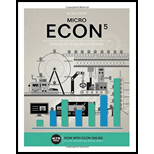-
Mercantilism: worst predictor because mercantilism discourages the idea of importing goods from another country, however, the United States relationship with Japan is one in which trade occurs. US will import goods from Japan and also export goods to Japan, but this allows
for Japanese products to be in competition with US ones in industries like consumer electronics and automobiles. -
Absolute advantage: Based on the domination of US firms in the production of computers it can be assumed that the US has an absolute advantage in that category, meaning they can produce more computers than Japan can. However, Japan seems to have the advantage with consumer electronics as most of those brands are from Japan. -
Comparative advantage: Cannot really tell who has the comparative advantage in these industries because opportunity costs are not known, but the fact that Japan dominates the consumer electronic industry and is
an active competitor in the auto industry, it is suggestive that they have a comparative advantage in those industries while US has it in computers. I would argue this is the best predictor of reality for these industries as countries will be best off by producing only the goods they have a comparative advantage in. Firm based theories:
-
Product life cycle: the 3 stages of a product; new product stage, maturing product stage, and the standardized product stage. It is important for goods to be successful in moving past the new product stage and that they can meet the demands of production or else the product will often fail. The necessary resources must be available, making this theory somewhat related to that of comparative and absolute
advantages. Production of goods often shift to lower cost manufacturing
sites, so in the case of the US, the parts of and computers itself of the leading brands in this industry are built outside of the US.
-
Country similarity: this theory deals with the intraindustry trade which is a god predictor of the automobile industry between the US and Japan. This happens between industries in varying countries who have similar consumer preferences. -
New trade: this theory suggests that firms will get aggressive in trying to expand beyond domestic parameters as economies of scale occur. These occur when the average cost of a good the firm produces decreases as the output of that good increases. The theory is a good predictor of intraindustry trade as firms consistently try and create an advantage for themselves and can do so by entering the markets of countries around the world.










 Principles of Economics 2eEconomicsISBN:9781947172364Author:Steven A. Greenlaw; David ShapiroPublisher:OpenStax
Principles of Economics 2eEconomicsISBN:9781947172364Author:Steven A. Greenlaw; David ShapiroPublisher:OpenStax





